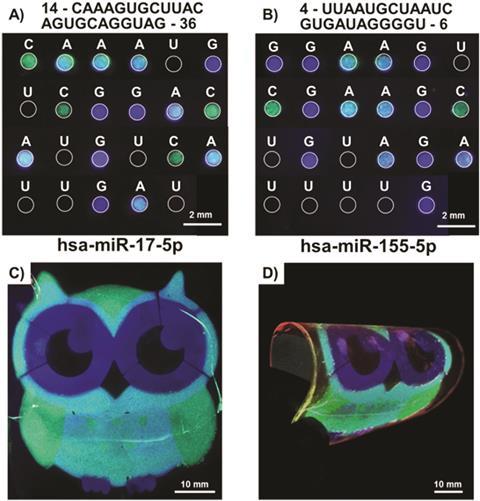A method to chemically save information in quaternary code using dyes could change how we approach data storage

Source: © Royal Society of Chemistry The researchers used their quaternary code to save and read different RNA nucleotide sequences (top) and could even create more intricate patterns like an owl
A flexible, transparent polymer film endowed with two small molecules can glow in three different colours, enabling data storage in a quaternary code. This chemical approach to data storage could allow more information to be stored in a smaller space than is possible with binary systems.
Modern storage devices need to be portable, robust and capable of carrying large amounts of data. One way to store information is through optical data storage. Data is recorded by making patterns that can be read back with the aid of light. Most techniques use binary code – systems that allow two different states, 1 and 0, for each data unit – to store information. Efforts have been made to increase the amount of information that these systems can store, mainly by physically reducing the size of each data unit. However, increasing the number of states each data unit could adopt, such as ternary (0, 1, 2) data storage, may lead to an exponential increase in information density.
To read the full article visit Chemistry World.
Beyond binary: optical data storage with 0, 1, 2, and 3 in polymer films
Peiran Wei, Bowen Li, Al de Leon and Emily Pentzer
J. Mater. Chem. C, 2017, Advance Article
DOI: 10.1039/C7TC00929A, Paper










